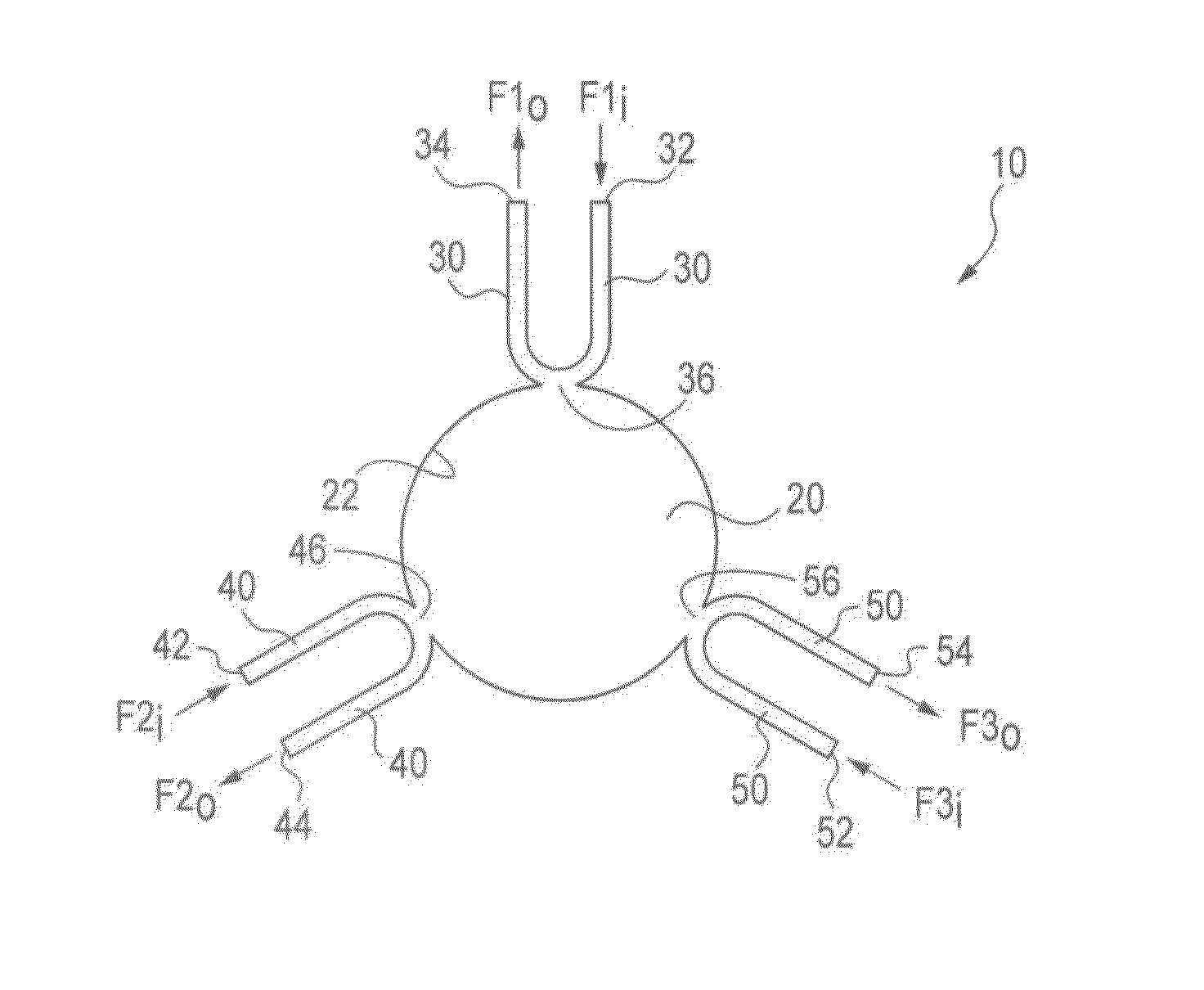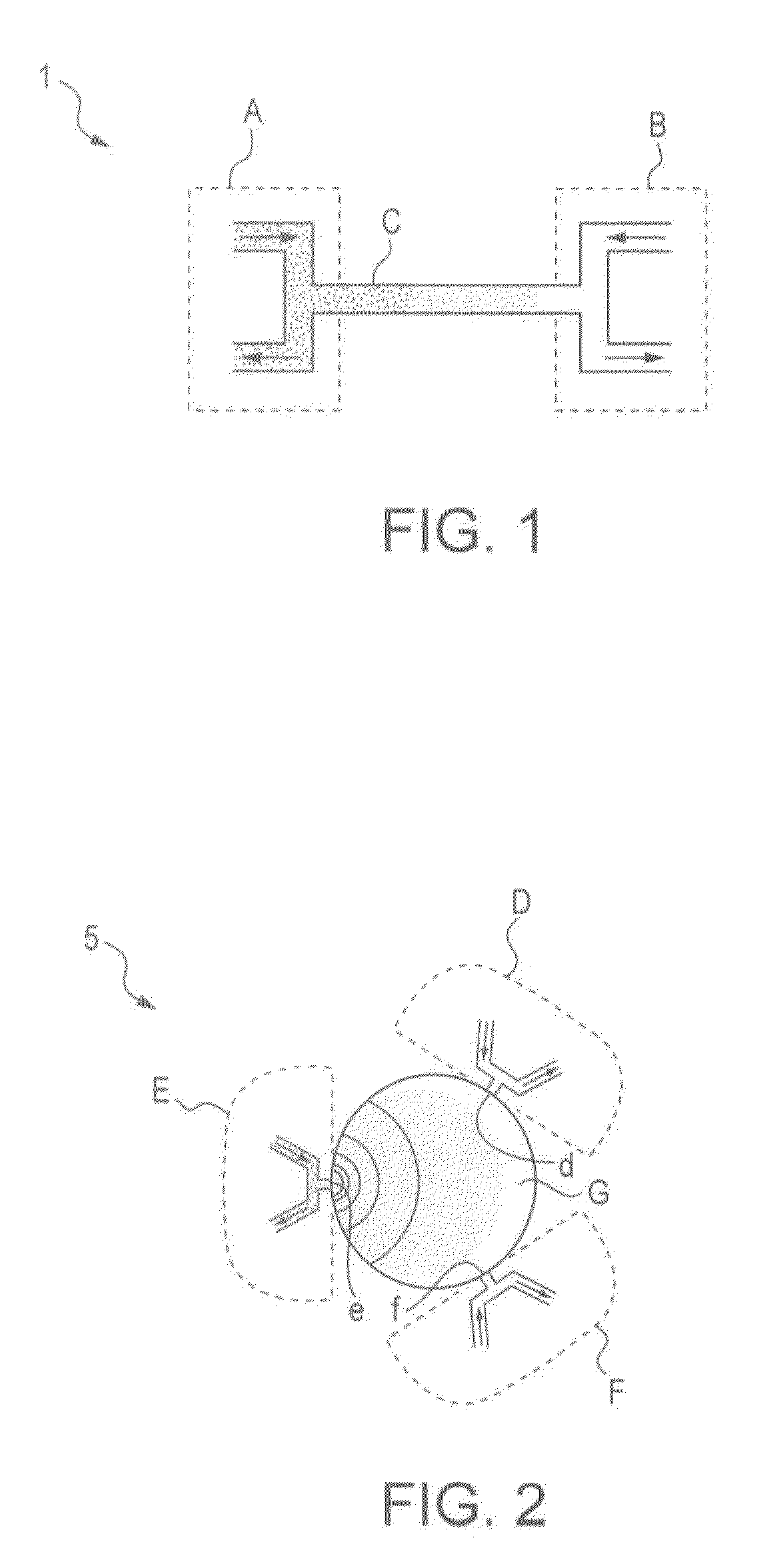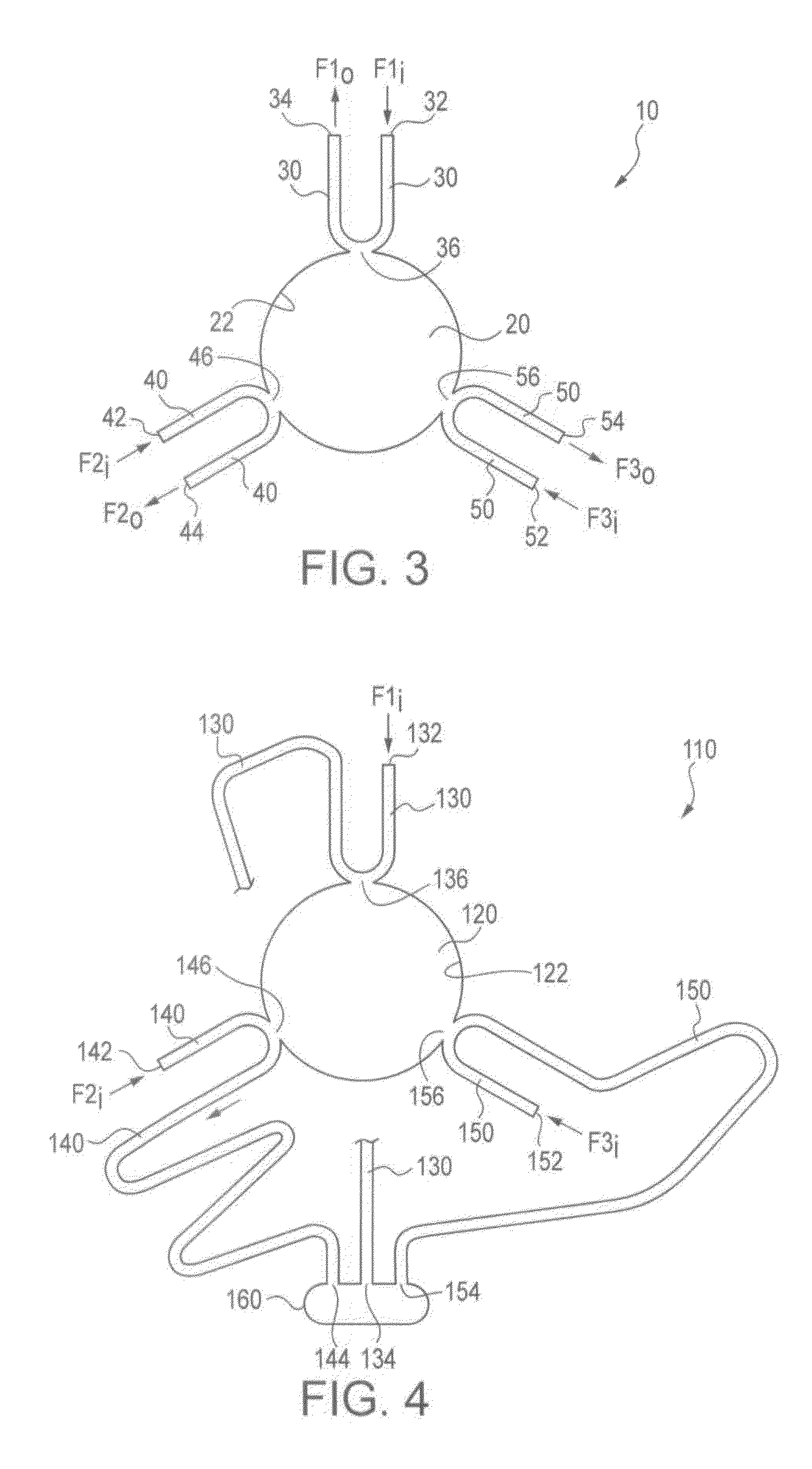Method and device for generating diffusive gradients in a microfluidic chamber
a microfluidic chamber and diffusive gradient technology, applied in the field of microfluidics, can solve the problems of cell exposure to convective flow, fluid flow is not well suited to analyze non-chemotaxis, and all of them have limitations
- Summary
- Abstract
- Description
- Claims
- Application Information
AI Technical Summary
Benefits of technology
Problems solved by technology
Method used
Image
Examples
embodiment devices
Preferred Embodiment Devices
[0054]FIG. 1 schematically illustrates a one dimensional design of a cross channel gradient generator. The device 1 generally includes two convection units, designated as A and B, separated by a microchannel C that provides fluid communication between the convection units A and B. A mass balance at each convection unit A, B, or the “T” junction at each end of the microchannel C, demonstrates that matching bulk flow rates through respective inlets and outlets is a necessary condition to decouple convection through each side channel of convection units A, B from diffusion across the main channel C. If the flow at one convection unit carries a solute concentration and flow at the other convection unit carries buffer, a diffusive gradient develops across the microchannel C and remains constant as long as the flows in the convection units A and B remain constant.
[0055]In accordance with an aspect of the present invention, this concept is extended to a multi di...
PUM
| Property | Measurement | Unit |
|---|---|---|
| areas | aaaaa | aaaaa |
| thick | aaaaa | aaaaa |
| diameter | aaaaa | aaaaa |
Abstract
Description
Claims
Application Information
 Login to View More
Login to View More - R&D
- Intellectual Property
- Life Sciences
- Materials
- Tech Scout
- Unparalleled Data Quality
- Higher Quality Content
- 60% Fewer Hallucinations
Browse by: Latest US Patents, China's latest patents, Technical Efficacy Thesaurus, Application Domain, Technology Topic, Popular Technical Reports.
© 2025 PatSnap. All rights reserved.Legal|Privacy policy|Modern Slavery Act Transparency Statement|Sitemap|About US| Contact US: help@patsnap.com



